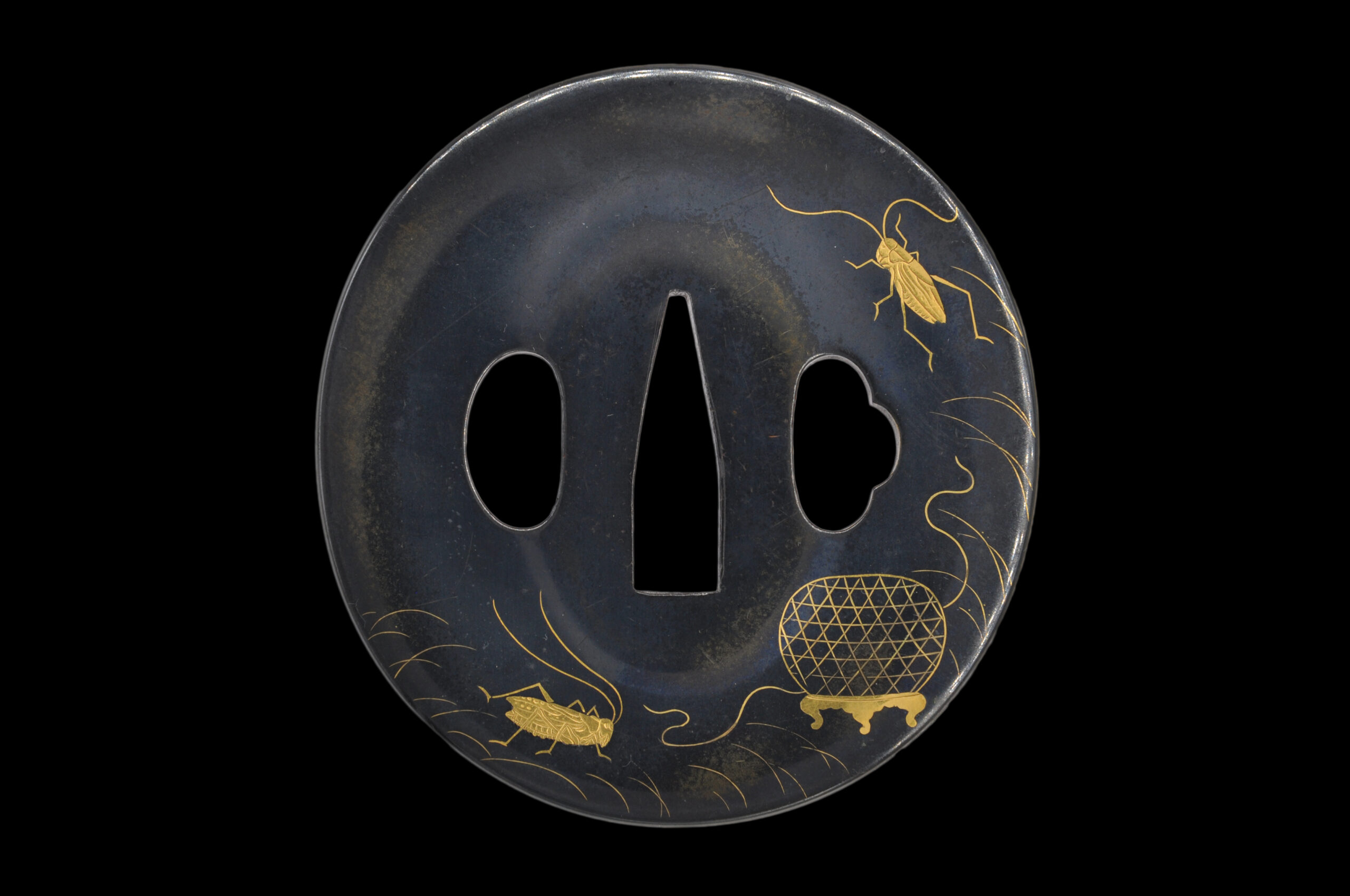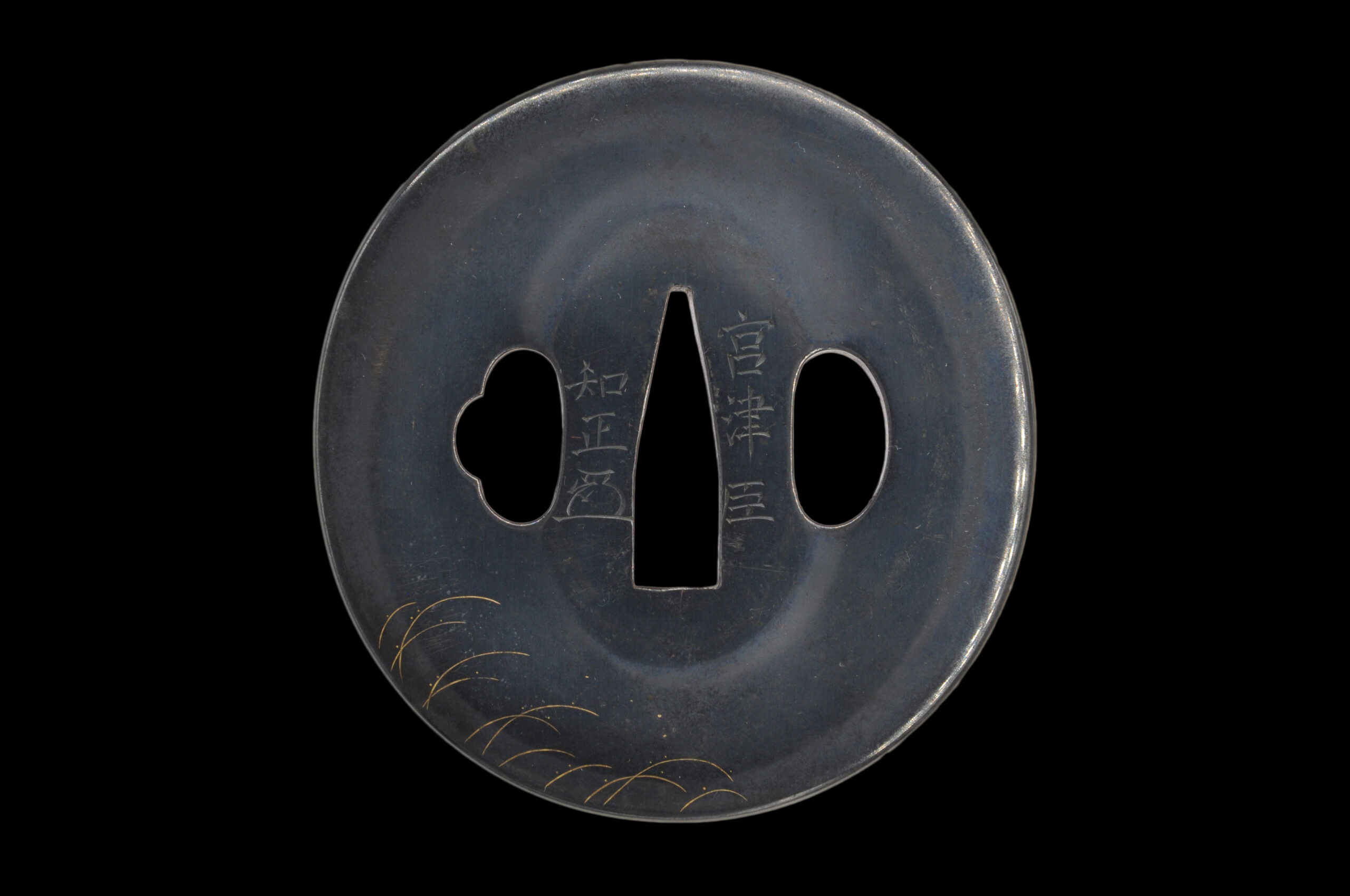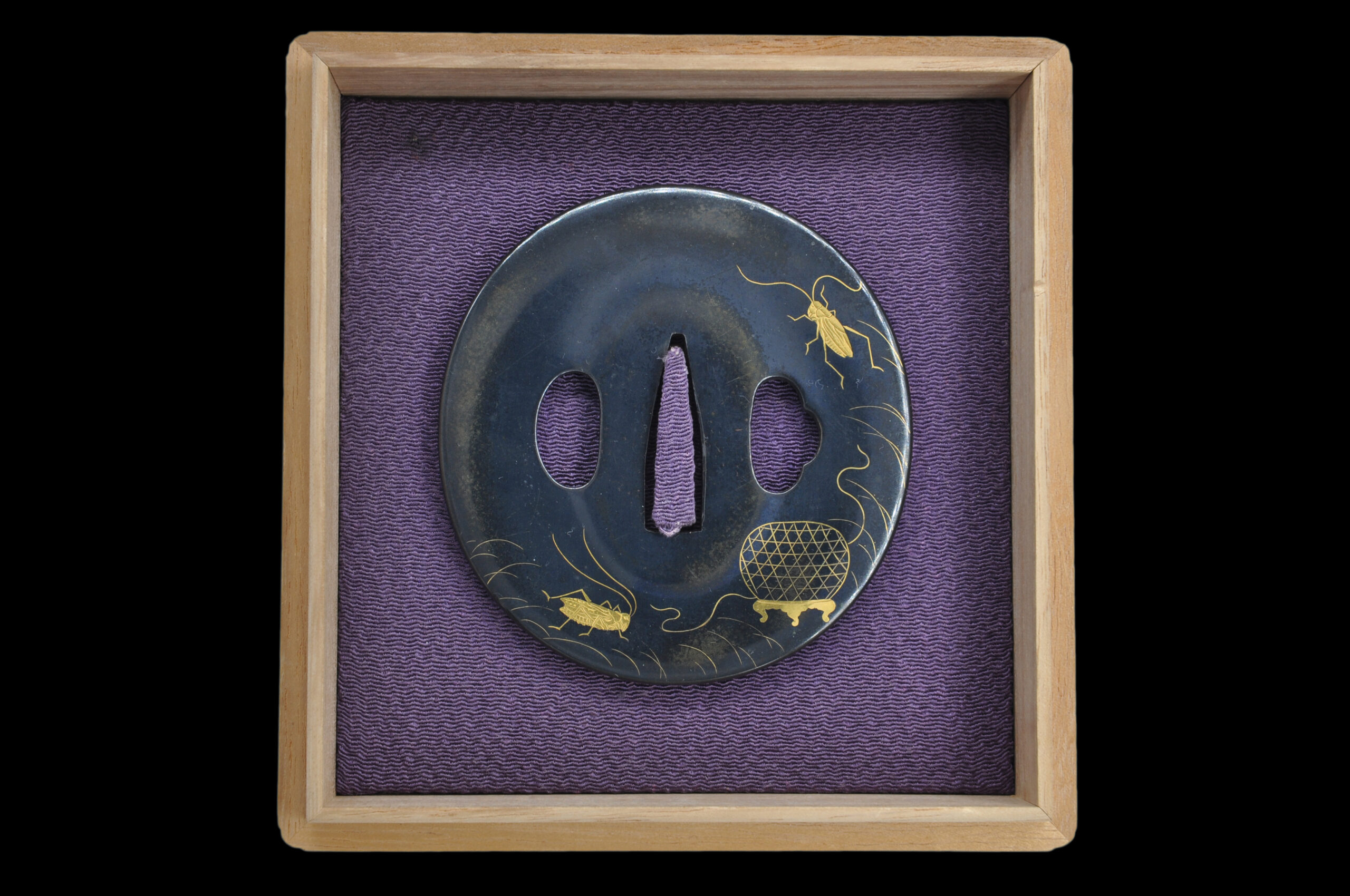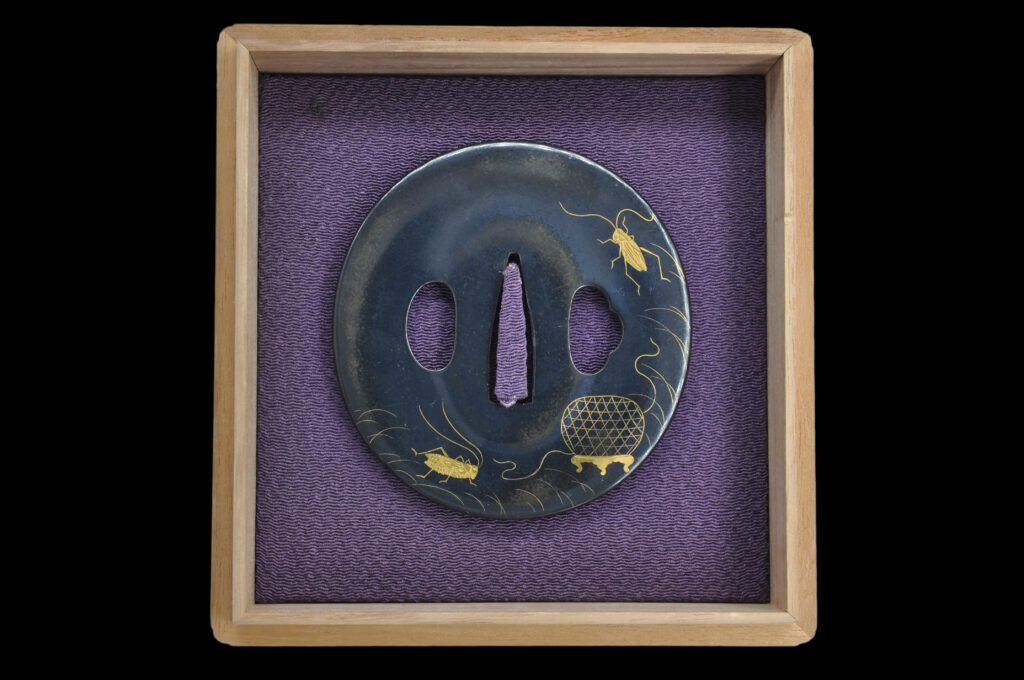Tsuba: Kaga – “Autumn insects with cage”
Signature/mei: Tomomasa Miyazuomi (kao)
Material: shakudo, gold
Era/jidai: Edo
Dimension: (h)74.5mm/(w)70.6mm/(d)4.5mm
Custom made box with cushion
NBTHK: Hozon (2021)
Price: €2500 / $2800 / ¥400000
Tsuba from the school – or the region – Kaga, which when they where signed, are difficult to find, as most of tsuba or kodogu from Kaga was left unsigned. This tsuba shows a famous design: “Autumn insects with cage”. During the Edo period, some artists called “Tomomasa” were active in Kaga. Further research is needed to determine which Tomomasa made this tsuba and, more importantly, when.
Here is another example for Kaga which would make a wonderful set.
The shape is a perfect mix of maru gata (round) and nara maru gata (oval) as it is slightly larger in height than in width, which is not noticeable at first glance but gives a more aesthetic taste to the overall impression. Even though it is more of a medium sized tsuba, the seppa dai is raised to the height of the rim, creating a small valley in the middle of the tsuba, making it very interesting to look at.
While the decorative design elements are placed more on the right side, the upper left part remains untouched. This is of course intentional, because if the tsuba would be mounted on a sword, the sword wielder’s thumb would rest here.
I don’t want to say that it was the thumb of a samurai: Since this tsuba was made during the Edo period, it is very likely that this tsuba was carried by a marchant. During the Edo period, merchants became a wealthy class and were allowed to carry a short sword, the wakizashi. Due to the size of this tsuba, it is surprisingly suitable for a wakizashi.
Also the workmanship and the materials used for this tsuba suggest, that it would have been an expensice tsuba. As samurai became poorer and poorer during the Edo period, it seems that is was the tsuba of a merchant or a samurai of higher rank.
Ultimately, the tsuba could have been a gift for simple viewing pleasure. Tomomasa put his signature on the backside, so that the omote is not disturbed when the tsuba is looked at when it’s not mounted.
But there are some traces near the nakago hitsu ana that the tsuba in fact was mounted and used. As there are no tagane, I think the tsuba was mounted only on one sword, maybe even custom made to fit perfectly without further need of modification.
The subject of the tsuba is “Autumn insects with cage”. In Japan it was common to catch cicadas and place them in a special cage, so that the sounds the cidaca create, it’s music, could be enjoyed.
On the omote we see two cicadas, inlayed with gold in a technique called hira zogan – “flat inlay”. The cicada itself is engraved with fine kiriba.
It’s legs and antennas, as well as the cage, are inlayed in very small hairline carving, which is common and typical for kaga tsuba. Also some blades of grass are depicted in the very same technique.

Finally, we come to the ura side where also a bit of grass is visible along with the artist’s signature:


